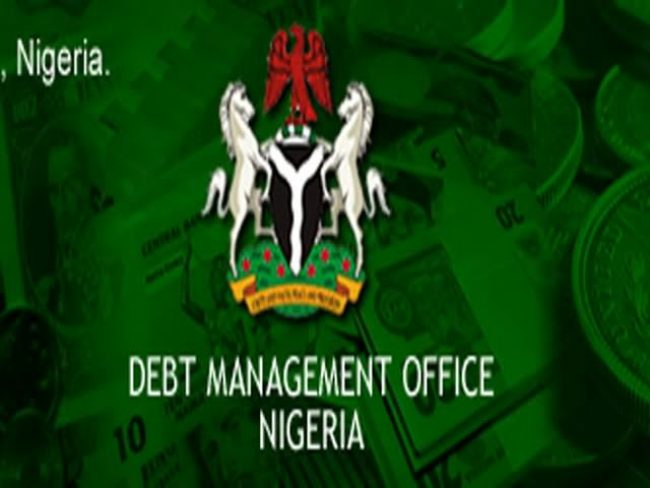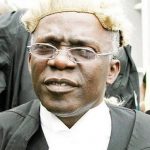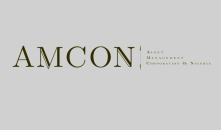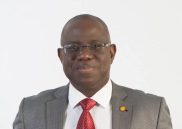

The Debt Management Office (DMO) says the public debt stock of the country is a cumulative figure of borrowings by successive governments over many years.
The DMO said this in a statement released in Abuja on Tuesday.
It said that it was not appropriate to attribute the Public Debt Stock to any particular administration.
It, however, explained that President Muhammadu
Buhari submitted a request to the National Assembly for approval of the 2016 – 2018 Medium Term External Borrowing Plan for the sum of 22.718 billion dollars.
According to the statement, this request is not a new one as being perceived but rather it represents those borrowings which have been submitted to the National Assembly but are yet to be approved before the expiration of the 8th Assembly.
Read Also: Court Jails Fake Doctor For 10 Years
“The requests in the Plan are proposed borrowings from multilateral and bilateral lenders.
“The proposed loans are concessional, semi-concessional, long-tenored and are for the purpose of financing infrastructure and other developmental social projects.
“All of which have multiplier effects in terms of job creation, business opportunities and overall increase in Nigeria’s Gross Domestic Product (GDP).
“Also, the benefits are long term and will serve generations of Nigerians .
“The proposed New Borrowing is consistent with the subsisting Debt Management Strategy which seeks to replace short term high –interest cost domestic debt.
“With low interest long term external debt and is one of the measures that is being implemented to moderate the level of Debt Service.
“The achievements in this regard are evidenced in the declining share of Domestic Debt in the Total Public Debt from over 83 per cent in December 2015 to about 68 per cent in June 2019,” it explained.
The statement noted that Nigeria had a ceiling of 25 per cent on the total public debt stock to GDP which is Debt to GDP and it had operated within.
It said that the ratios for Dec. 31, 2018 and June 30, 2019 were 19.09 and 18.99 per cent respectively.
“The Debt Service to Revenue Ratio (Debt Service/Revenue) has however, been higher than desirable and provides strong justification for the current drive to increase Oil and Non- Oil Revenues significantly.
“The debt service to revenue for the years 2017 and 2018 were 57 per cent and 51 per cent respectively.
“The debt service figures have grown as a result of the increase in the Debt Stock and relatively high domestic Interest Rates.
“Still on the issue of debt sustainability, when compared to a number of countries, Nigeria’s Debt to GDP is relatively low but the Debt Service to Revenue is relatively high.
“The United States of America, United Kingdom and Canada had Debt/ GDP ratios of 105, 85 and 90 per cent in 2017 which were much higher than that of Nigeria.
“But because they generate adequate revenues, their debt service to revenue for the same year were 12.5, 7.5 and 7.5 per cent respectively.
“The case was also similar for Brazil, South Africa, Kenya and Mexico who had higher Debt to GDP than Nigeria (74, 53, 57 and 46 per cent respectively but had lower debt service to revenue of 32.20, 11.4, 13.2 and 13.6 per cent respectively.
“This is clear evidence that Nigeria’s revenues are low. This is further demonstrated by Nigeria’s tax to GDP ratio of only six per cent in 2018 compared to Kenya’s 15.7, Morroco 21.8, Cameroon 12.2 and South Africa 27.5 per cent in 2017.”
The statement pointed out that the above figures attested to the fact that Nigeria had a revenue challenge rather than a debt problem.
According to the statement, it is in this regard that all efforts are in top gear to increase revenues through measures such as the Finance Bill and Strategic Revenue Growth Initiative.
“Overall, the justification for the borrowing is that many of the projects in the plan are for the development of infrastructure in the areas of roads, railways, waterways and power which will help to unleash the potential of the Nigerian economy.
“Other loans such as those for the educational sector will contribute to the development of Nigeria’s human capital, while loans for Agriculture will be used to diversify the economy.
“There will also be funding for Development Finance Institutions to enhance access to finance for Micro, Small and Medium Scale Enterprises.”






















